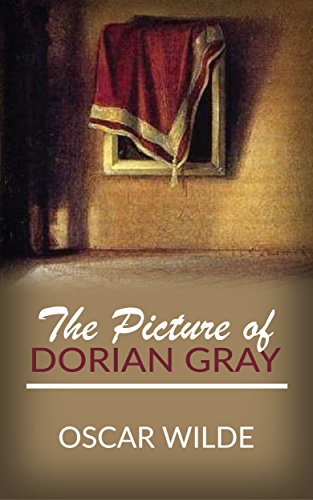
Oscar Wilde’s The Picture of Dorian Gray follows the life and gradual descent into degeneracy of the beautiful Dorian Gray. It begins with painter Basil Hallward creating the titular picture of Dorian, who entertains himself while posing through philosophical banter with Lord Henry Wotton. At this moment, Dorian is innocent and pure; Basil, who has great affection for Dorian, warns Lord Henry not to taint him with his philosophical talk. While Lord Henry laughs off the idea then, as the book progresses, he introduces Dorian to the hedonistic pursuit of pleasure, thus catalyzing Dorian’s aforementioned descent into degeneracy.
After the painting is completed, its beauty is so stunning that Dorian Gray makes a wish that he retains his youth while the painting ages instead of him. It comes true in the worst way possible.
I, personally, really enjoyed this book. I’ve been exploring Western classics for the past year or so and, maybe it’s just the ones I happen to be choosing, but none have been as fascinating as this. I do have a preference towards books that center around works of art—I also really enjoyed The Goldfinch—but the themes Wilde touched upon, such as the transience of youth and beauty, the intertwining of art and life, as well as the idea of appearances versus reality are all things that I find very interesting.
Perhaps it’s just how many young adult novels I’ve read, but I find that protagonists tend to be younger rather than older, which I suppose makes sense as they still have more life to live and more lessons to learn. Wilde explores this as Dorian Gray, by means of his wish, appears young forever. Instead of the sagely mentor who appears in so many young adult novels, Gray is guided by the debauched Basil Hall, never growing past his obsession with external appearance and indulgent pursuit of good.
Throughout the novel, Wilde essentially equates youth with beauty, displaying it as something desirable. But, it becomes apparent that Dorian Gray’s youth and beauty is actually a curse. He is never able to grow past his vices as young adult protagonists do, becoming a sort of Narcissus, obsessed with a mere idea of himself.
I think that the gap between who we really are and who we believes ourselves to be is something that’s really interesting and something that can be seen a lot in this novel. As Dorian Gray becomes more hedonistic, his soul degrades and is visually represented in the aging painting of him. He’s unwilling to accept this, hiding the painting behind a curtain, which parallels how he hides behind his beauty and, for a majority of the novel, simply tries to evade consequences for any sins he commits instead of truly addressing them.
This novel reminded me of The Great Gatsby in the way that it explored the consequences of a life lived carelessly. The main difference is that while Gatsby is pretty much always presented as a product of his environment (living among the decadent rich), Gray begins as pure and becomes addicted to the instant gratification that hedonism brings. In both cases, though, we see the lives of both characters eventually catch up to them.
On top of the ideas in the novel, Wilde’s writing is very pleasant to read. At times, he inserts little philosophical tidbits, often from the mouth of Lord Henry who posits most everything he says as rational and true, which are often very blunt and mildly mean. It’s nice being the reader because you have the awareness that the characters lack, and quotes like, “The ugly and the stupid have the best of it in this world” are executed in such a witty manner as to not become too painful to read.
Dorian Gray’s not a character that you root for. I found that there was something so unremorseful about his conduct and his character lacked any warmth: it was hard, if not impossible, to sympathize with him at all. This entire novel is like that saying about not being able to look away from a car crash. But that’s what makes it so good: the reader witnesses the entirety of Dorian’s transformation, sees his soul grow ugly, and watches him become more and more irredeemable. You know he’s doomed from the start and every step of the journey offers a grotesquely interesting exploration into the world of the selfish, the cruel, or maybe just the people who pursue the lives we would never dare to.
I’d rate this book a 10/10 and generally recommend it to anyone, but especially to anyone who has an interest in art or art history due to how heavily that motif features in the story. I think anyone who enjoyed The Great Gatsby would also enjoy this, based on the way it shows characters who also went down the wrong road.
Checkout Picture of Dorian Gray from the Newport Beach Public Library.
